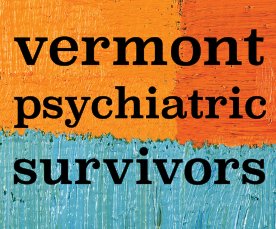Commentary by Laura Shanks, VPS Patient Representative
When I started working at Vermont Psychiatric Survivors, I was introduced to the term neurodiversity and discovered I am neurodivergent.
As someone who doesn’t support most modern Western psychiatric practices, diagnoses, or forms of treatment (I follow holistic and alternative health care practices), I was delighted to learn about the movement.
Diagnosed with ADHD, I think and function differently than the average person. Neurodiversity embraces alternative ways of cognitive functioning as just another way of being rather than a disease that needs to be cured. As someone who didn’t finally get “better” until I started to love and embrace myself for who I really am, this really resonates with me.
The word “neurodiversity” was coined by sociologist Judy Singer in 1998 and is a shortened version of neurological diversity. It is the concept that there are natural variations in human brains that lead to differences in how we think, behave, and interact with our environment.
Neurological differences like autism, ADHD, dyslexia, etc. are just that — differences. The neurodiversity movement purports that different brains work differently and have inherent strengths and weaknesses and that this is not a pathological disorder, but rather a form of diversity, like race or ethnicity.
Neurodiversity is viewed as an asset to society as different approaches and skillsets are valuable and provide more growth.
The movement proposes that challenges met by the neurodiverse community aren’t necessarily inherent to their brain’s differences, but rather, the social and physical environment we live in (Social Model of Disability).
Neurodiversity has been a popular topic in our weekly peer support, and I have found that neurodiverse peers resonate with the movement, embracing their differences rather than viewing them as symptoms.
We all have brains that are designed to work and learn differently, giving us unique and special personality traits. Being told that these differences are wrong, or being forced to mask them, often comes at the cost of our self-esteem, as well as mental, emotional, and physical well-being.
The neurodiversity movement is still young, however, and one of the biggest issues I ran into in writing this article is that most neurotypical people (those who do not fall under the neurodiverse umbrella) aren’t aware of it. Many still misunderstand autism, ADHD, Tourette’s, etc., and assume they are only the exaggerated and distorted views portrayed in the media.
The same way non typical sexual and gender preferences were once viewed as disease, I have no doubt acceptance of neurodiversity on a larger scale is around the corner, we just need to spread the word.
At the end of the day, while I personally feel a strong connection to the neurodiversity movement and agree that neurodiversity very much exists and is a beautiful thing, I also recognize that overly identifying with any label can be harmful
It is the nature of the mind to categorize and label. This is how it sorts and stores information as memory, which is helpful, but when we cling to these labels it can create an “us versus them” mentality which is dangerous. We are all unique, special, and different. Accepting and supporting ourselves and others, no matter the label, is ultimately the most effective form of care.


Please try Golden milk made with organic turmeric which in India is a sovereign remedy for ptsd, dementia, Alzheimer’s, alcoholism and drug addiction. Add a teaspoon of organic turmeric to a few cups of whole milk. Simmer the milk, cooking it at a low heat until there is a sweet smell. Turn the heat off, letting it cool off before quaffing it. Turmeric is anti-inflammatory, antibacterial and antifungal.